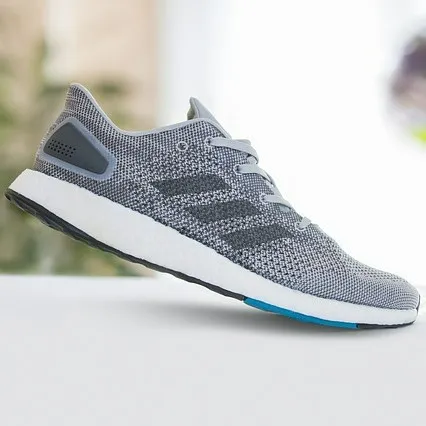In This Article
“Should I run with calf pain?” – this is one of the more common questions we get from runners in our physiotherapy clinic.
The question isn’t as straightforward as it seems.
On one hand, feeling your calves working hard and occasionally tightening up isn’t a bad thing.
On the other hand, any muscle tightness could be the start of an injury.
So here’s our simple three step checklist to determine if sore calves are a warning sign or just part of the running experience.
The screening process
Step one: is the calf pain just on one side, is it sharp?
If the calf pain is only on one leg, it tends to indicates an asymmetrical loading pattern.
This may not be an injury in itself but the asymmetrical loading pattern is a major cause of many running injuries.
Step two: did the calf pain happened after an easy session or has it happened on a few occasions now?
If you got calf pain after a single high intensity session involving sprints or hills, it’s less of a concern.
This is because we are expecting the calf muscles to work extra hard.
If you get calf pain after an easy run, that starts to ring alarm bells.
We’re not expecting the calf muscles too overload during those sessions so muscle soreness seems out of character.
If you keep getting calf pain after running sessions on a few occasions, this may indicate that your calves are struggling to keep up with your training or that there’s an injury brewing.
Either way, it’s an early warning sign that you need to back off before injury strikes.
Step three: is the calf pain persisting beyond after 24 hours?
Most muscle soreness after overload can be pretty nasty the day after training. But it begins to loosen up after 24 hours and completely resolved after 3 days.
If the calf pain isn’t easing after 24 hours, there may be another cause behind the trouble. This can include things like bone stress conditions.
So can I run with calf pain?
In answer to your question “should I run with calf pain?“, it’s a NO if you can you answered YES to any of the above questions.
If your calf pain is one-sided, sharp, recurrent or persistent, this could be an indication of an underlying calf injury.
Until our sports injury app is released, we can’t tell you exactly what that injury might be.
But in the meantime, see if any of these symptoms match what you’re feeling.

Need a running shoe to help ease calf pain?
Our Physio experts have listed the key shoe features to look for if you’ve got calf pain, including recommended brands and models.
Possible causes of calf pain
Calf muscle injury
Calf muscle injury often begins with a localised painful tightness in one part of the calf. It is usually sore to push on that location.
Tibial bone stress
Tibial bone stress can cause a deep diffuse calf pain. It still feels sore during heel raises, which can often lead to a misdiagnosis as a muscle injury. The big clue here is after each run, the pain will persist for up to 3 days.
Vascular conditions
Vascular conditions can includes occlusions of blood vessels behind the knee reduction in flow capacity of the blood vessels deep in the calf. The defining feature of most vascular conditions is that they significantly restrict your running but the pain resolves within a few minutes after you stop.
Shin splints
Shin splints is an umbrella term that covers a number of possible conditions. We’ve gone into detail on which conditions are involved and what they feel like in our article on shin splints.
Compartment syndrome
Compartment syndrome is caused by an increase in pressure in the calf, which then squashes nerves and blood vessels. Much like vascular conditions, the calf pain results within a few minutes after you stop running.
Referred pain
Referred pain can come from nerve irritations at the lower back or conditions like Sciatica. Most episodes of referred pain can be correctly diagnosed because the pain continues down into the foot or extends up into the hamstring.
Ruptured Baker’s Cyst
A Baker’s Cyst is it pocket of fluid that collects at the back of the knee. If this pocket of fluid ruptures, it causes symptoms very similar to a muscle tear. There’s a rapid onset of pain and significant tightness.
